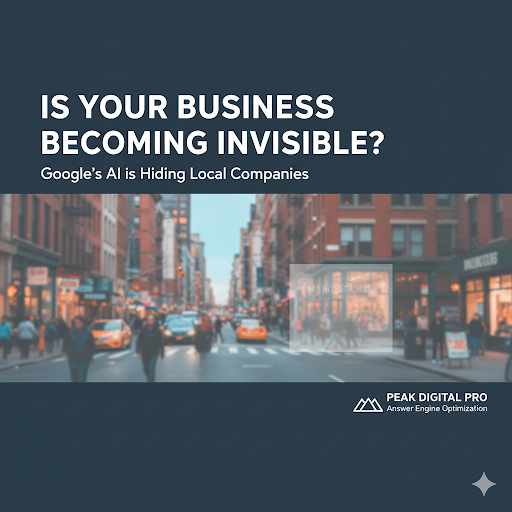Website User Experience: A 2025 Guide for Business Owners
Website user experience has turned into a make-or-break factor for any business trying to win customers in 2025. You might think investing in a flashy new design is just another expense on your to-do list. But here is a shocker. Every dollar poured into user experience can return up to $100 , making it one of the most profitable business decisions you will ever make. So the real power move is not just having a website but building one that feels effortless and unforgettable for every visitor.
Table of Contents
Quick Summary
| Takeaway | Explanation |
|---|---|
| Invest in User Experience | Every dollar spent on user experience can yield a return of up to $100, significantly impacting business revenue. |
| Optimize Website Performance | Websites should load in under three seconds to retain user engagement and improve search rankings. |
| Simplify Navigation Structure | Clear and simple navigation helps users find information quickly, reducing frustration and increasing conversion rates. |
| Enhance Mobile Responsiveness | With over 60% of traffic from mobile devices, ensuring a seamless mobile experience is crucial for customer engagement. |
| Localize Design and Content | Incorporating local imagery and relevant content fosters a stronger connection with users in specific regions, enhancing user engagement. |
Why Website User Experience Matters for Business
Website user experience represents the critical intersection between digital design and business success. When customers interact with your online platform, every second and every interaction determines whether they become a loyal customer or navigate away forever.
The Economic Impact of User Experience
Businesses cannot afford to ignore website user experience. Research from Forrester reveals that every dollar invested in user experience can generate a return of up to $100. This staggering statistic underscores how strategic design directly translates into financial performance.
Customer expectations have dramatically transformed. Users now demand seamless, intuitive digital interactions that solve their problems quickly and efficiently. A poorly designed website signals potential customers that your business might be similarly disorganized or unprofessional. Conversion rates plummet when users encounter confusing navigation, slow loading times, or non-responsive designs.
Performance Metrics That Matter
Google’s research demonstrates that website performance critically impacts user behavior. Websites that load within three seconds retain significantly higher engagement rates compared to slower platforms. Consider these key performance indicators:
- Page Load Speed : Directly influences user retention and search engine rankings
- Mobile Responsiveness : Essential for capturing over 60% of internet traffic
- Intuitive Navigation : Reduces user frustration and increases time spent on site
To illustrate how key website performance metrics affect user engagement, here is a summary table:
| Performance Metric | Importance | Impact on Business |
|---|---|---|
| Page Load Speed | Faster loading keeps users engaged, improves search rankings | Higher retention & conversions |
| Mobile Responsiveness | Ensures usability for users on mobile devices | Captures >60% of web traffic |
| Intuitive Navigation | Simplifies finding information and tasks | Reduces frustration, boosts time on site |

Building Trust Through Digital Experience
Website user experience goes beyond aesthetic appeal. It communicates your brand’s commitment to customer satisfaction. When users can easily find information, complete transactions, and enjoy a smooth digital journey, they develop trust in your business.
Professional design signals competence. It tells potential customers that you invest in understanding their needs and are willing to create digital experiences that prioritize their convenience. In a competitive marketplace, this attention to detail can be the difference between acquiring a new customer or losing them to a competitor.
Your website is often the first point of contact between your business and potential customers. Make it count by prioritizing user experience as a strategic business asset that drives growth, builds credibility, and establishes your digital presence.
Key Elements of Great Website User Experience
Creating an exceptional website user experience requires strategic design and thoughtful implementation of multiple interconnected elements. Understanding these components helps businesses transform their digital platforms from mere online placeholders to powerful engagement tools.
Navigation and Information Architecture
Brigham Young University’s UX research emphasizes the critical importance of simplified navigation and clear information architecture. Users should be able to intuitively understand how to move through your website, find desired information, and complete tasks with minimal cognitive effort.
Effective navigation means creating logical menu structures, using clear and descriptive labels, implementing breadcrumb trails, and ensuring that users can always understand their current location within the website. Intuitive pathways reduce user frustration and increase the likelihood of conversion.
Visual Design and Accessibility
The User Experience Design & Technology guidelines highlight the significance of visual design in creating engaging digital experiences. This goes beyond aesthetic appeal to include principles of clarity, consistency, and accessibility.
Key visual design considerations include:
- Color Contrast : Ensuring readability for users with visual impairments
- Typography : Using legible fonts and appropriate text sizes
- White Space : Creating breathing room that prevents visual overwhelm
- Responsive Design : Adapting seamlessly across different devices and screen sizes
Performance and Interactive Elements
Website performance directly impacts user experience. Research indicates that users expect websites to load quickly and respond instantly to their interactions.
Critical performance elements include:
- Page Load Speed : Optimizing images, minimizing scripts, leveraging browser caching
- Mobile Responsiveness : Ensuring full functionality across smartphones and tablets
- Interactive Feedback : Providing clear responses to user actions through animations, loading indicators, and error messages
A great website user experience is not about perfection but about creating a smooth, intuitive journey that anticipates and meets user needs. By focusing on navigation, visual design, and performance, businesses can develop digital platforms that not only look professional but truly serve their audience.
Simple Ways to Improve Your Website User Experience
Improving website user experience does not require a complete website overhaul. Strategic, incremental changes can significantly enhance how visitors interact with your digital platform and perceive your business.
Streamline Navigation and Content
The Nielsen Norman Group emphasizes the importance of simplifying website navigation. Complex menus and overwhelming content can frustrate users and increase bounce rates. Implement clear, concise navigation that helps users find information quickly.
Consider these practical strategies:
- Minimize Menu Options : Reduce top-level navigation to 5-7 essential categories
- Use Descriptive Labels : Create menu items that clearly explain what users will find
- Implement Search Functionality : Allow users to quickly locate specific information
- Create Clear Hierarchies : Organize content logically with submenus and dropdown options
The following table summarizes simple strategies to improve website navigation and user experience:
| Strategy | Benefit |
|---|---|
| Minimize Menu Options | Prevents overwhelm and speeds up navigation |
| Use Descriptive Labels | Helps users quickly understand destination |
| Implement Search Function | Enables direct access to wanted information |
| Create Clear Hierarchies | Organizes content for easy discovery |
Optimize Website Performance
Google’s research demonstrates that website speed directly impacts user satisfaction. Slow-loading pages can cause users to abandon your site within seconds.
Performance optimization techniques include:
- Compress Images : Reduce file sizes without sacrificing visual quality
- Minimize HTTP Requests : Streamline scripts and external resources
- Leverage Browser Caching : Store static resources locally to improve load times
- Use Content Delivery Networks : Distribute website content across multiple servers
Enhance Mobile Responsiveness
With over 60% of internet traffic coming from mobile devices, creating a mobile-friendly experience is no longer optional. Your website must adapt seamlessly across different screen sizes and devices.
Mobile optimization strategies:
- Responsive Design : Ensure layout adjusts automatically to screen dimensions
- Touch-Friendly Elements : Create large, easily tappable buttons and links
- Simplified Forms : Minimize input requirements for mobile users
- Readable Typography : Use legible font sizes and appropriate contrast
Improving website user experience is an ongoing process of understanding user needs, testing different approaches, and continuously refining your digital platform. By focusing on navigation, performance, and mobile responsiveness, you create a more engaging and effective website that serves your business goals and delights your customers.
Website User Experience Tips for Colorado Businesses
Colorado businesses operate in a unique digital ecosystem that demands targeted website user experience strategies. Understanding local digital trends and user expectations can significantly enhance your online presence and customer engagement.
Localized Design and Navigation
The Colorado Office of Information Technology provides critical guidance on creating effective web experiences. Proper page structuring is essential for businesses targeting local audiences. This means using clear header hierarchies, creating intuitive navigation, and ensuring content is easily scannable.
Local businesses should consider these region-specific design elements:
- Local Imagery : Incorporate Colorado landscapes or local business scenes
- Regional Color Schemes : Use colors that resonate with Colorado’s natural palette
- Geographically Relevant Content : Highlight local services and community connections
- Clear Location Information : Prominently display address, service areas, and local contact details
Form Design and User Interaction
The City of Denver’s Web UX/UI Style Guide offers specific recommendations for creating user-friendly forms that are crucial for local business websites. Effective form design can dramatically improve user engagement and conversion rates.
Key form design strategies include:
- Single Column Layout : Simplify form completion
- Bold Field Labels : Place labels above input fields
- Clear Mandatory Fields : Indicate required information
- Inline Validation : Provide immediate feedback on user inputs

User-Centered Digital Services
Colorado’s User Experience Playbook emphasizes the importance of building human-centered web services. For Colorado businesses, this means going beyond basic functionality to create truly engaging digital experiences.
Implement these user-centered principles:
- Accessibility : Ensure websites work for users with different abilities
- Local Performance Optimization : Consider Colorado’s diverse internet connectivity
- Mobile-First Design : Cater to users across urban and rural Colorado
- Community-Focused Content : Reflect local business values and regional characteristics
Successful website user experience for Colorado businesses is about more than just design. It is about creating a digital platform that feels authentic, welcoming, and uniquely aligned with the state’s entrepreneurial spirit. By focusing on localized design, thoughtful interaction, and user-centered principles, businesses can create websites that not only look great but truly connect with their Colorado audience.
Frequently Asked Questions
What is website user experience (UX)?
Website user experience (UX) refers to how users interact with and perceive a website. It encompasses factors such as navigation, design, performance, and overall usability, all of which contribute to user satisfaction.
Why is user experience important for businesses?
User experience is crucial for businesses because a positive UX can significantly impact customer retention and conversion rates. Investing in UX can yield returns of up to $100 for every dollar spent, making it a vital aspect of business strategy in the digital age.
How can I improve my website’s performance?
You can improve your website’s performance by optimizing images, minimizing HTTP requests, leveraging browser caching, and using content delivery networks to decrease load times. Aim for your site to load in under three seconds to retain user engagement.
What elements should I focus on to enhance user experience on my website?
Key elements to focus on for enhancing user experience include intuitive navigation, clear visual design, mobile responsiveness, fast loading times, and accessibility. These aspects work together to create a seamless and enjoyable user journey.
Ready to Turn Website Visitors Into Loyal Customers?
You have just read about how poor website user experience can frustrate your users, drive them away, and cost your business real revenue. If you are worried about slow site speed, complicated navigation, or a digital presence that does not reflect your brand’s professionalism, you are not alone. These are common pain points keeping Colorado businesses from realizing their full potential online. Imagine what your business could achieve if every click on your site felt seamless, engaging, and purposefully designed to convert.

At Peak Digital Pro , we do more than spot problems. We transform outdated websites into powerful sales platforms with professional web development solutions backed by advanced SEO and proven ad strategies. If you are ready to see measurable results, visit our main site today and let us help you build a user experience your customers will remember. Do not let another year go by with missed opportunities. Reach out now for expert guidance and a custom plan tailored for your business goals.







